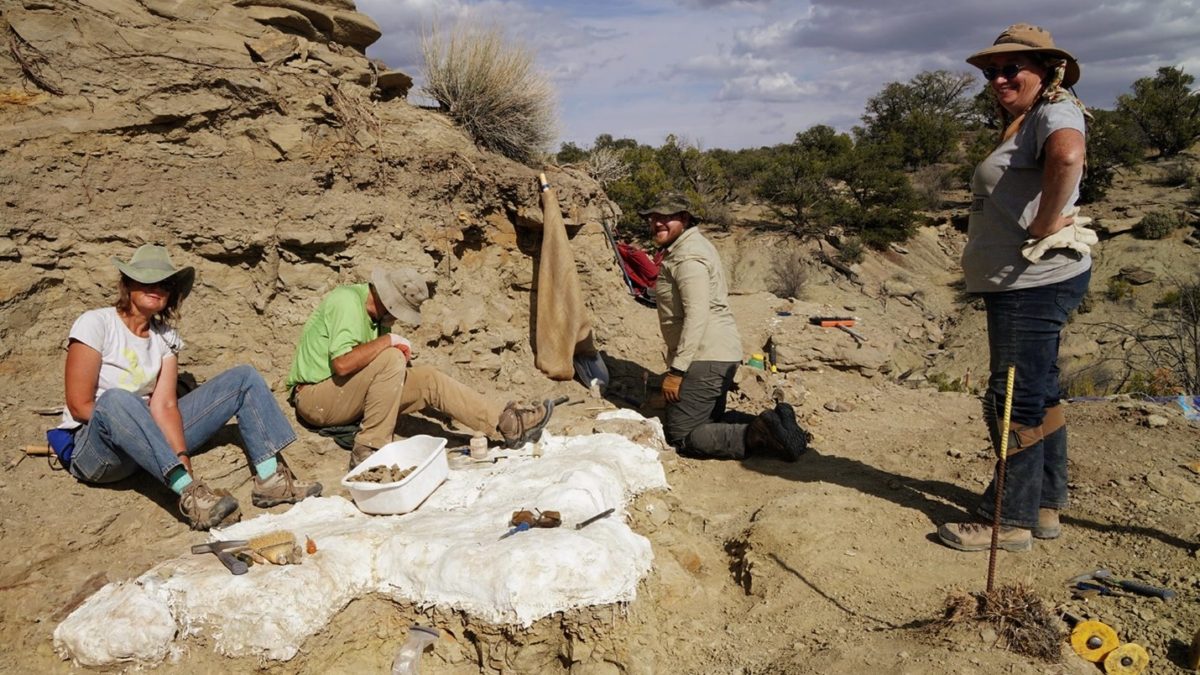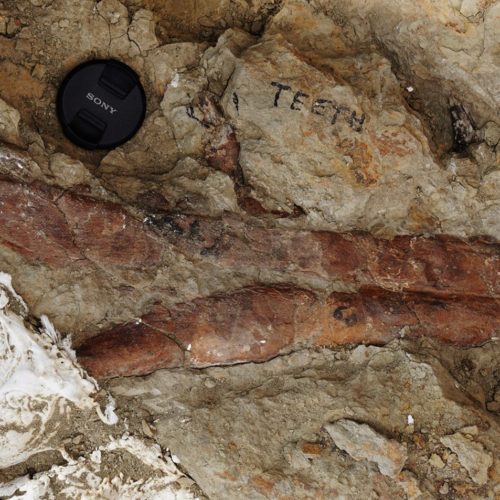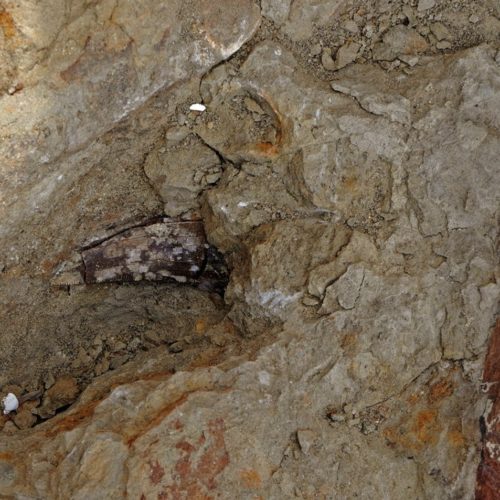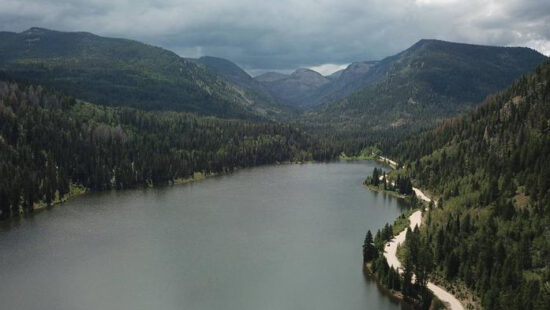News
T rex fossil awaits further discovery this summer in Escalante

Volunteers from the Natural History Museum of Utah work at the T2 Tyrannosaur excavation site, located in the Kaiparowits Formation of Grand Staircase-Escalante National Monument. The site was discovered by Grand Staircase-Escalante National Monument paleontology program volunteer Taylor Barnette in November 2018. Photo: Bureau of Land Management
ESCALANTE, Utah — In November 2018, Taylor Barnette found himself on the ledge of a 76-million-year-old sandstone near the top of a steep face in southern Utah.
Barnette, who at the time was a volunteer for the Bureau of Land Management Utah’s Grand Staircase-Escalante National Monument’s paleontology program, noticed bone fragments littered all over the slope.
He had seen similar things on his various dinosaur site trips before, but he could tell this one was different.
He reported it to Paria River District (PRD) Paleontologist Dr. Alan Titus, who was encouraged to learn more.
The following June, a seasonal field tech for the PRD confirmed the site, naming it TAB-18-2 (T2 for short). “The site preserved a large theropod dinosaur, believed to possibly be a T-rex,” the BLM said.

The BLM turned to its longtime partner, Dr. Randy Irmis with the Natural History Museum of Utah (NHMU), due to the large size of the animal and the fact that it was capped by a solid six-foot tink wall of concrete-hard sandstone.
During the site work in 2021, volunteers picked and hammered day after day, eventually managing to push it back almost eight feet beyond its former limit. They uncovered a trove of beautifully preserved bone from nearly every part of the animal’s body: skull, legs, backbone, tail and pelvis.
“The bone quality is as good as I’ve seen from the Kaiparowits,” Dr. Irmis said at the time.
The biggest challenge for the team so far has been finding ways to split the specimen into blocks, in order to make the project more manageable.
“Right now, if I just capped everywhere there is high density bone, I’d have a single block weighing about 5 tons, which we could never get out of this remote location,” said Tylor Birthisel, NHMU’s lab and field program manager.

“The museum team will be back in 2022 to try and solve this puzzle, as well as the many other challenges that come with retrieving such an important specimen from the rugged Kaiparowits Plateau, and getting it ready for scientific research,” BLM said.
“A team including Dr. Irmis is currently trying to determine if there might be second new species of tyrannosaur in the Kaiparowits Formation and this new specimen will certainly be important for answering that question.”
“There is such vast potential for the Monument to help paleontologists answer some big-picture questions on evolution and extinction,” Dr. Irmis said. “It really is the ideal outdoor laboratory. Specimens like these are important pieces of a much larger puzzle—collecting, studying, and preserving them is important for both science and the public.”



















